The value of ambush in the Mongolian strategy and tactics of warfare. Part of 2
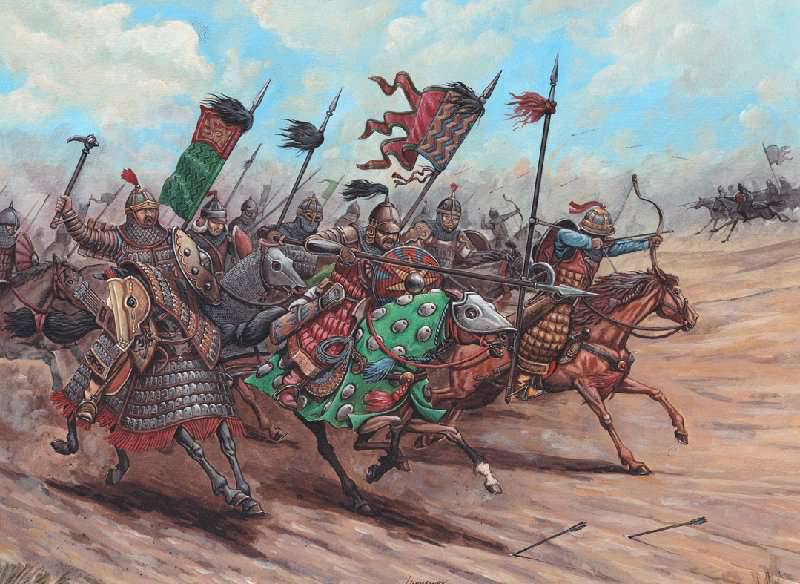
Later author - Matvey Mekhovsky - noted in his work that the Tatars, being in the region of r. The yews, making their raids from there, “devastated and burned Vatsu with her cathedral church. They also approached Pest, where King Bela the Fourth gathered an army against them, but then left, now approaching, now fleeing, according to his military tactics. ” In fact, these maneuvers pursued one goal - to lure the enemy into operational-tactical space, on which the Mongolian troops could quietly cover them from different sides. Ambush - traps were arranged by the troops not only in an open area, but also in populated areas. Thus, the commander of Urus-Khan "Kara-Kisek-Oglan sent Otrar to get the language, Satkin the big and Satkin the small, the most prominent Uzbek brave men (bahadur), with a hundred horsemen. One peasant (barzigar) saw them outside the city and reported to Ak-Timur-bakhadur. Ak-Timur-bakhadur with 15 riders suddenly went to them, seemed to lure enemies, fled, and among the streets and gardens in some corner sat in an ambush. Enemies with complete hope jumped, dropping the reins. When they passed the ambush site, Bahadur approached from behind, struck everyone with sword strikes, killed (Hurdapai) subordinates, and sent the elders to the court. ” It is noteworthy that the attack of the soldiers who were in ambush at the enemy was carried out, as a rule, from behind, i.e. from the rear, or the side that did not expect an attack.
The successful, operational-tactical location of the ambush on the eve of the approach of the enemy troops sometimes radically changed the military-strategic situation in its favor and did not allow the enemy to begin active hostilities. In the winter of 1318, the large Golden Horde army, commanded by Uzbek Khan, invaded through the Iron Gate (Derbent) into the territory of Hulaguid Iran. The military operation was curtailed in view of the fact that “two Mongols seized from the army of the peacekeeper (Abu Sa’id) led to Uzbek Khan, who personally began to interrogate them about the situation of Emir Chupan. They replied: "Chupan with 10 mists of troops, for [setting up] an ambush, through Karchaga came to the rear of you." Uzbek-Khan, in Mongolian style, said to Kutlug-Timur and Isa-gurgan: “The person we are looking for is in our rear; Where should we go? ” In this situation, the Uzbek army was forced to withdraw to their original positions.
In 1335, the army of the Golden Horde was defeated due to the fact that the Hulaguid ruler Arpa Khan "with a large army and uncountable weapons and with equipment he went to the bank of the Kura and occupied the river bank wherever a crossing was possible, and from (different) sides sent considerable troops with eminent emirs to go to the rear of the Uzbeks, bravely attacked them from an ambush and showed them at night Doomsday. The plan was a success. ” Golden Horde once again had to retreat. In order to avoid, or minimize as much as possible, the risks at war, the available military forces were divided into several main parts, one of which was responsible for ensuring security during marching, in battle, and on rest.
В stories military art, they received the name of guard troops, performing tactical functions for the protection of logistics and strategic communications. The presence of such special units made it possible to avoid escaping the troops into an ambush prepared by the enemy, to protect their vulnerable sides and not to allow them to strike a sudden blow at their own battle formations. The role of the guard service increased during the period of lengthy military campaigns, especially during their stay in enemy territory. Genghis Khan, being in the Central Asian-Iranian region “for the sake of supervision and protection of the roads to Ghaznin, Garchistan, Zabul and Kabul, sent Shiki-Kutuk with several other emirs, such as: Takachak, Mulgar, Ukar-Kalja, Kutur-Kalja, with 30 thousands of people in those limits, so that they conquered those countries as far as possible, and also were a guard army [guard] so that he and his son Tului-khan could freely engage in the conquest of the possessions of Khorasan. ” In addition to capturing the listed points, the main purpose of sending a large sentry force (in fact, in military language, the observational corps) under the general leadership of Shiki-Kutuk was to cover the rear areas of the main army units engaged in conquering the specified area.
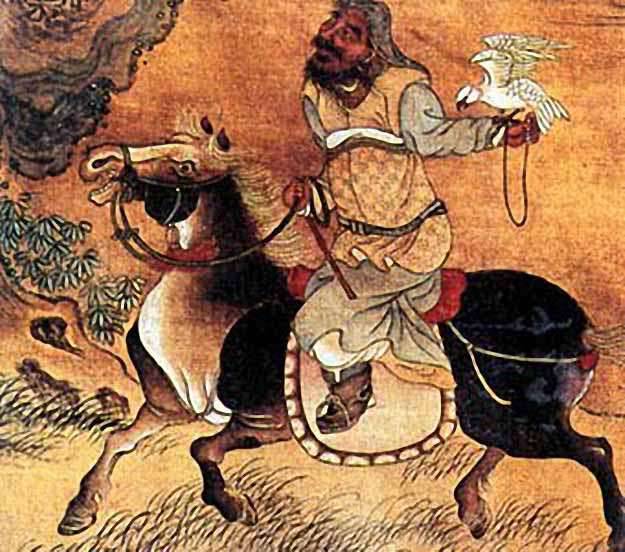
In 1245, Mr. Plano Karpini, who was passing through the Russian lands south of Kiev in the Kanev region, met on his way the first frontier possessions of the Mongols, ruled by the commander Korenzoi (Kurumishi - supposedly the third son of the Horde), who was the “master of all those who set up an outpost against all the peoples of the West , so that they do not accidentally rush on them suddenly and unawares; as we heard, this leader has under his rule sixty thousand armed men. " This information practically coincides with the information of Benedict, who calls the city of Kanev the western foothold of the Tatar army. Even if you critically consider the proposed number of advanced Mongolian troops in the west - "60 000", then there is no doubt that the task of this combat unit is the function of the guard corps, providing protection against a sudden attack from this side. The same task was carried out by the “guard unit” under the command of the grandson of Shiban, the son of Balakan - Toktadai (Murtad-Toktadai, Tama-Tokday), whose winter camps were located “near the Terek River, near Derbend”. This shock corps of the Golden Horde army was stationed here permanently and was concentrated against a specific goal - Hulaguid Iran. From the time of Berke’s rule, the Derbent gorge (or “Iron Gate”), which blocked the main routes between the two states, was entrusted to the “protection of a noble emir”. The military forces of Ulus Juchi in this region were considered among the most combat-ready in the Horde army. The ambassadors of Khan Tokta, directed to the ruler of Iran, Gazan-Khan, boastfully told him, wanting to emphasize the military power of the Golden Horde, that “starting from the Crimea and Karakorum to the outskirts of Derbend, the 10 of our army’s overhead guard troops stand so that the tent is adjacent to the tent and the rope [hip] clings to the rope. " It was from this strong point of the southern borders of the Golden Horde that all the Juchids attacked the Ilkhanids in the 13th – 14th centuries. The heir to Hulagu - Abaga-Khan, becoming the sovereign ruler, first of all, sent troops to protect the borders. “First of all, he sent his brother Yushumut to Derbent, Shirvan and Mugan to Altan to protect those limits from the enemy, and he also appointed another brother Tubshin with a full army to Khorasan and Mazandaran to the banks of the Amui River,” etc. Abaga, enmity with the Chagataid Barak, sent “his son Argon with a great equestrian army to the country of the Dry Tree, to the Ion River itself [i.e. R. Amu Darya. - A.K.]; and there he lived with his army, he guarded the land, so that King Kaida would not destroy them. He lived Argon with his army in these plains of the Dry Tree, guarded many cities and castles all around. ”
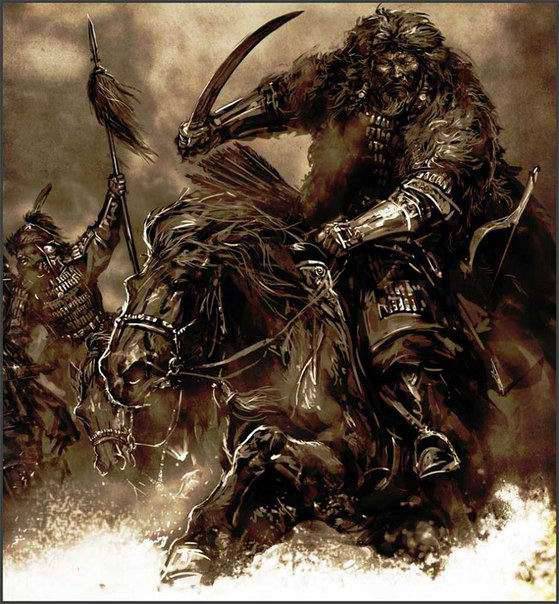
Argun did likewise, reigning on the Ilkhan throne, who sent “the son of Kazan with thirty thousand horsemen to the Dry Tree, that is, to these countries, to guard and protect their people and their lands”. Thus, the rulers of the Mongolian uluses gave priority to the safety and security of their possessions. The significance of these military units is indicated by the fact that in the structure of the Mongolian army the heads of the guard units were equalized with other higher ranks of the troops. Thousands of sentry units — commanders of regiments were endowed with the same honors as governors of 10 thousandth corps — tumens. This indicates that the military-administrative status of these two, seemingly, at first glance, non-equivalent categories of military officials was equated. In the event of an enemy attack, the guard troops assumed the entire brunt at the initial stage of the war. The army of the Egyptian Mamluks was many times superior to the sentry units of Kit-Bugi-noyon, which had been previously assigned to Hulagu, but the Mongols and the Georgians and Armenians allied with them in the battle of Ain-i-Jalut 1260 were defeated. In the autumn of 1308 (708), there was a major military confrontation between the advance units of the troops of Khan Tokta and Ilkhan of Iran Uldjate in the border area. Here is how the chronicle of Rukn ad-Din Bai-leopher reports about this: “Watch them post [Ilkhanids. - AK], detached to the frontier of their possessions, met the Tokta guard detachment [who was there] to guard their lands; a clash occurred between them and some attacked others. Defeated by the guard Harbend [degrading nickname to Uljate. - AK] and suffered a great defeat. Only a few of them were saved. This is what prevented them from moving further. ” This example shows that the further course of the military campaign depended on the combat readiness and initial success of the sentry units.
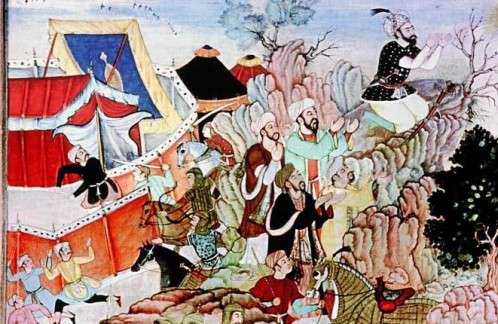
The army of the Central Asian conqueror Timur, approaching the army of Toktamysh, advanced towards him a guard detachment, which received the following instruction: “When you see the black mass of the enemy troops, then if there are many of them, you show yourself and, after starting to flee, step back so they are deceived and moved forward. Hurry to let everyone know what happens. ” It is clear here that the main task of this guard detachment was to lure (if you can literally say so. Pull out) the enemy behind you, i.e. so that they move closer to the positions of the main forces preparing for a covert, massive attack. False tactical withdrawal of the advanced parts of the army, this is the most tried and tested method of the Mongolian field battle, designed to bring the enemy to the pursuit of the "fleeing" troops, during which he lost tactical control over the course of the battle. At the same time, during the invasion of Timur’s armada 1391, Toktamysh himself tried to weaken his enemy through the alleged retreat of the Golden Horde troops. He “learned that hunger reigned among his troops [Timur. - AK] the pursuer and hoped to tire them with long marches, avoiding any collision and constantly retreating as they approached, while his outposts showed up every day in order to disappear in this vast desert and lure the enemy army there, "the French historian believed M. Charmois. This is confirmed by Yazdi, according to which Toktamysh "did not stop until the arrival of Timurov’s troops, and the guard posts of the enemy army showed up daily, but turning back, they left and, moving away to this boundless steppe, did not stop." Toktamysh, therefore, tried to apply a long-term withdrawal strategy, relying on the exhaustion of the invading Chagatai troops. At the same time, he had no support for the fortifications of cities.
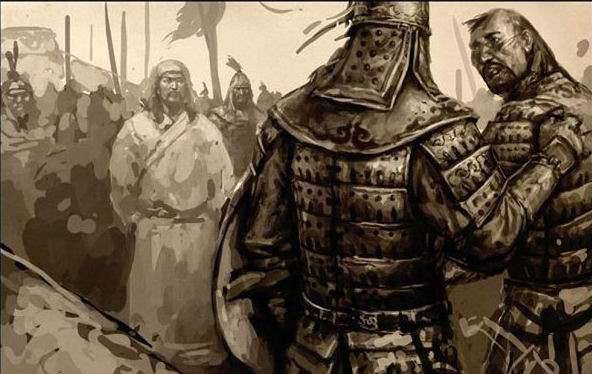
The principle of tactical retreat has always been successfully applied in the troops of the Golden Horde khans, based on the numerical and, accordingly, tactical inequality of the opposing sides. 7 July 1445 in the battle on the river. Kamenka two thousand squad of the sons of Khan Ulu-Mohammed - Makhmutek and Yakub met with the army of Basil II of Moscow. The battle was relatively short, but tough. The Golden Horde “feignedly ran to disrupt the fighting order of the Russians. Having lost the fighters in 500, Makhmutek and Yakub eventually snatched the victory from the hands of the Grand Duke of Moscow. Basil himself, wounded from head to foot, was captured. "
Similar information can be found in many Western written sources. The Crimean Tatars - the heirs of the military art of the Golden Horde preferred ambushes in the war. “They [i.e. Tatars. - A.K.] do not like, - says J. Fletcher, - to join the battle, but they have some ambushes, where (appearing once and having fought lightly) they are immediately removed, as if from fear, and thus if possible, lure the enemy here. " The soldiers of the Kazan Khanate acted in the same way in the 16th century, when another Moscow prince Vasily III marched a large army against disobedient Kazan. The Kazan commanders decided to outsmart the Muscovites many times above them and set up their military camp “in full view of the enemy, whereas the best part of the army was hidden in a place convenient for an ambush. Then, as if startled by fear, they suddenly rushed out of the camp and started to flee. The Muscovites, who were not so far away, saw the flight of the Tatars and, having forgotten about the system, promptly rushed to the camp of the enemy. While they, believing themselves to be safe, were busy plundering the camp, the Tatars, together with the archers of the Cheremis, ambushed and staged such a massacre that the Muscovites were forced to flee, leaving their guns (tormenta) and guns. Together with the others, they fled, leaving the guns, and two gunners. ”
Building on this particular tactic of the Turkic peoples, Mihalon Litvin, speaking of the "mores of the Tatars" and other ethnic groups close to them, emphasizes that "often turning to flight, turning back, they stop and, when the haunting enemy is already scattered, attack on him from ambushes, and so sometimes they, the vanquished, take away the victory from the winners. " It should be noted that the pace of such an imaginary flight was very intense and made it possible in the process of “indiscriminate” retreat to captivate and at the same time disrupt (scatter, crush) the enemy’s combat tactical construction. It also suggests that steppe commanders were not only well versed in military art, but also used sophisticated elements of military psychology, imposing on the enemy a false idea of his supposedly tactical superiority, while convincingly imitating the role of “future victim” and at the same time showing his own weakness. Such military-tactical scenarios were carefully prepared in advance and, quite obviously, the functions of the main performers of this action were clearly distributed.
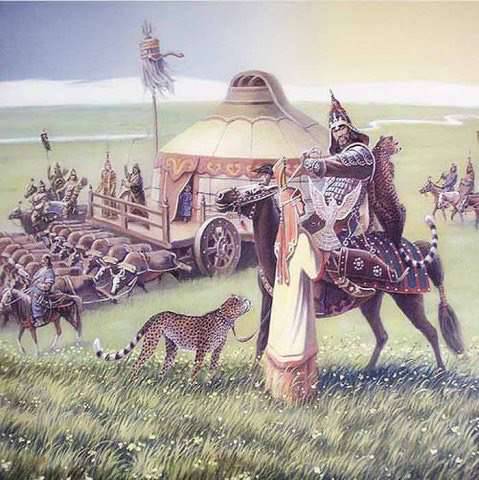
In medieval written sources (Persian-Turkic origin) in military clashes involving Kazakh and Uzbek rulers, the ambush is often also mentioned as a separate military unit operating independently on the battlefield. So, “when the troops of both sides mixed with each other, the swordheads' bakhadurs and brave knights [Abu-l-Khair-Khan], coming out of the ambush ..., surrounded Mustafa-Khan's army], they, by the will of the Most High Lord, lit the fire of battle and the battles, in turn, the warriors of Mustafa Khan, saw that the sea of troops [Abu-l-Khair-Khan] ... and releasing the reins of the will, [they] fled. Mustafa Khan, throwing out of his thought a strong passion of leadership and padishahstva, turned to flight. The army, the shelter of victory, with the help of God drew the sword of bloodshed on them, and so many people from the enemy's army were killed that the accountant of the mind was powerless to count [them]. ” The advantageous (secretive) location of the ambush, skillfully hidden on the ground (shrubs, reed beds, steppe beams, etc.), as a rule, predetermined the whole course of a fierce battle. Thus, in the battle between Muhammad Shaibani-Khan and the Kazakh Janish Sultan, the latter, “having chosen a convenient time, ... went along narrow paths and through a thicket of trees and reed beds and made a crushing attack on the troops of Sultans (Shibanites)” and almost succeeded .

Thus, the above convincingly demonstrates that the nomadic peoples in the Mongolian period used such tactical tactics as ambushes in an initiative and effective way, bringing them to high operational art. The ambush as a pre-planned form of the future battle was used by the troops in the military practice of Eurasian nomads for a long period and survived to a fixed ethnographic reality. At the same time, it is worth noting that the military strategy of nomadic peoples was characterized by the advancement of so-called. guard (or more precisely security) troops stationed in key geographic areas and performing border and intelligence services. In the Golden Horde system of protection of geopolitical borders, a special place was occupied by border lands - Derbent (North Caucasus region) or distant Khorezm (Central Asian region), which had geostrategic importance, where there were always strong “watchdogs” of the Golden Horde, advanced against the possessions of Hulaguids and other political opponents. It can be said that border-guard lines passed here, marking the state borders or the limits delimiting the two powers. At the same time, these were the advanced military bases of the Golden Horde troops, which defended the attack of the enemy or concentrated in the event of an invasion of the territory of neighboring states.
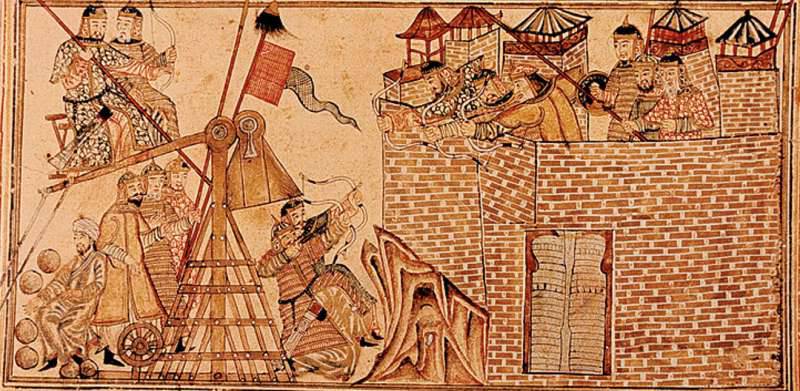
Information